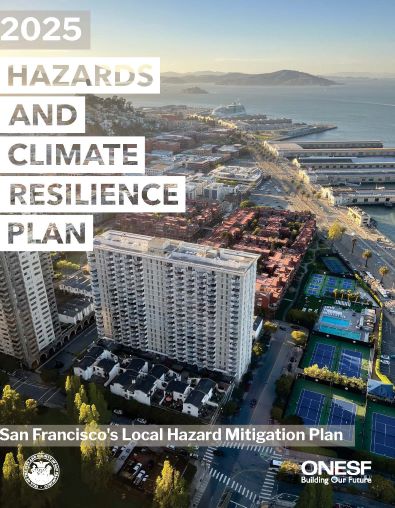The 2025 Hazards and Climate Resilience Plan (HCR) is San Francisco’s roadmap to minimizing the impacts of natural hazards and climate change on buildings, infrastructure, and communities. It identifies the natural hazards and climate risks San Francisco faces and proposes over 75 strategies to build resilience.
The HCR also serves as San Francisco’s Local Hazard Mitigation Plan. It is updated every five years to include the latest understanding of natural hazards and climate change impacts, local risks, and community priorities. The 2025 HCR has been approved by the Federal Emergency Management Agency (FEMA) on 8/14/2025.
The 2025 HCR serves as an update to the 2020 HCR and is a key implementation plan for the Safety & Resilience Element of the San Francisco General Plan. It also complements the City’s Climate Action Plan, a roadmap for eliminating greenhouse gas emissions to minimize the severity of climate-related hazards.
Download 2025 Plan
Download 2025 Executive Summary
Download 2025 Factsheet
Learn more about the risks that 13 natural hazards pose to San Francisco

This dashboard provides an interactive way to search and learn more about the more than 90 strategies that make up the City’s Hazards and Climate Resilience Plan.
Hovering over each graphic will display additional information and the dashboard features multiple selection functions using CTRL + Left Click.
The first page displays the strategies in the Hazards and Climate Resilience Plan as grouped into the three main domains: Buildings, Infrastructure and Community. Together these address the 13 different natural hazards found in San Francisco.
The second page shows each strategy in reference to the lead department responsible for implementation and reporting.
Key Contacts:
For more information, please contact the following staff from the SF Office of Resilience and Capital Planning:
Melissa Higbee
melissa.higbee@sfgov.org
HCR Plan Project Manager
415-554-4939
Alex Morrison
Resilience GIS Analyst
alex.morrison@sfgov.org
415-554-6075


